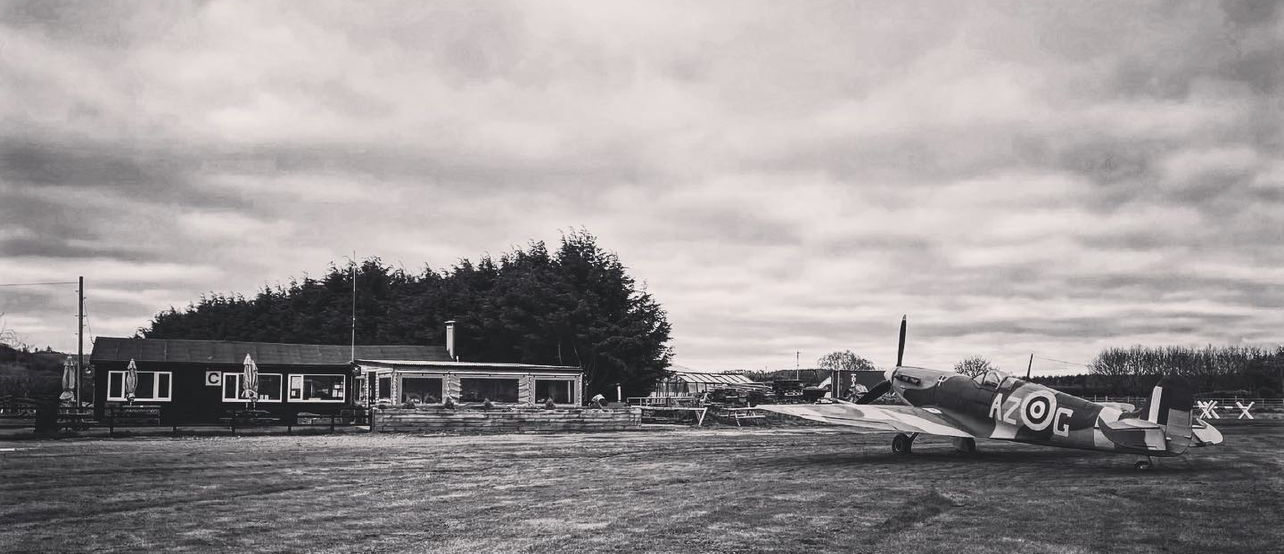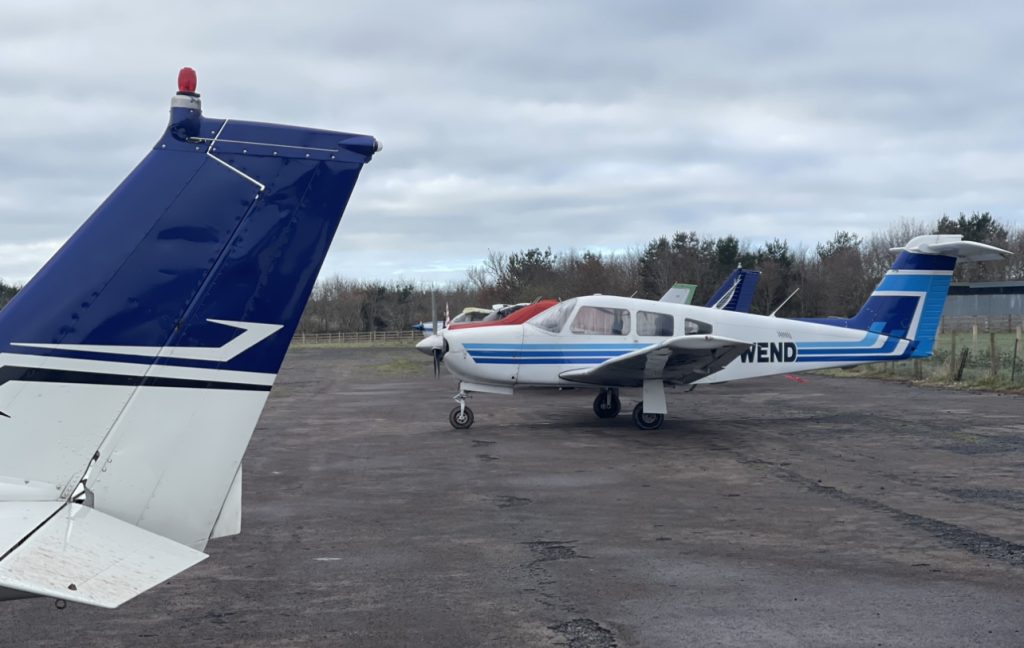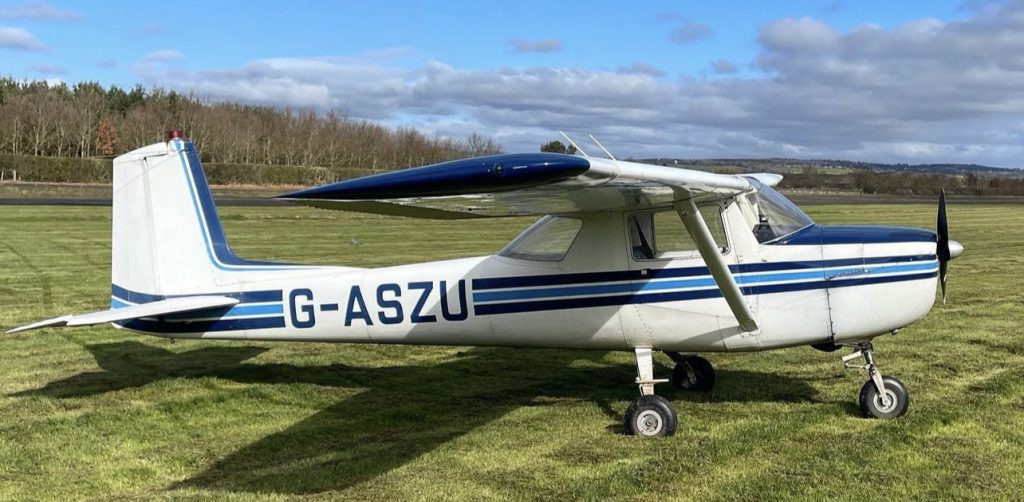
So, in case you didn’t see it, this isn’t actually lesson 15, lesson 15 happened a couple of weekends ago but the weather was so bad my instructor and I abandoned the lesson after only 10 minutes in the air, so I’m not counting it…
My instructor also dropped a bombshell, he was leaving imminently to join the airlines, so I’d need to pick another instructor. Gah.
New Instructor
Knowing that this lesson was to ideally be my first solo circuits lesson, I reverse-engineered booking my lesson based on the best forecasted weather in the coming week.
Choosing a new instructor was then simply a case of seeing who was available on that day
After a quick back and forth of messages, the lesson was booked and the new instructor was aware that I was due to start solo circuits.
Arriving bright and early for the lesson, we briefed for the lesson ahead. This first thing was to go through the solo checklist – did I know how to manage certain situations. For example:
- Engine fire
- Engine failure after take off
- Unstable approach requiring go around
- Radio failure
We commented that a flap failure was very unlikely as this aircraft has manual flaps but in the other school aircraft which have electric flaps there are failed modes to be aware of, requiring flapless landing. We briefed for it anyway.
And then he hit me with a scenario I’d not considered before:
“What would you do if something happens and the airfield closes while you’re in the circuit?”
It was unlikely, Eshott has 3 non-intersecting runways, but at smaller airfields with a single runway it does happen.
I described the area around the airfield, immediately to the north west there is a small microlight site called Athey’s Moor, but I said the runways were quite short. And 14 nautical miles to the south is Newcastle International Airport, a fairly busy commercial airport with a large single runway capable of handling a daily Emirates Boeing 777. More than enough for me and my floaty landings… But I knew Newcastle is a PPR (prior permission required) airport.
Reading my mind, he said, “In that situation, head down to Newcastle and I’ll call ahead to let them know you’re coming.”
I nodded, saving the information into my aging grey matter.
The new instructor sympathised with the disruption that having to demonstrate where you’re up to again can have on your training, but said we’d get onto solo circuits today.
Pre-flight
I wandered over to the aircraft, G-ASZU, and ran through the external and internal pre-flight checklists.
The only issues were the green nav light needed a tap before it came on, and the nose wheel oleo strut was pumped up too much but that would resolve itself when we got moving.
The parking apron was quite busy, with the school’s fleet of Cessna 150s sitting alongside a Piper Cherokee that had been repaired after a minor accident and was now available to hire, and a visiting PA28 Turbo with retractable gear.

Dual Circuits
I taxiied out to runway 25, recently renumbered from 26 due to the ever shifting migration of magnetic north, and did the power checks. All good.
I made the departure radio call and moved the Cessna into position for take off before pushing the throttle forward and counter-acting the combined slipstream and crosswind yaw with a hoof of right rudder.
I flew the left hand circuit, taking care to avoid the noise sensitive areas (posh houses) and turned onto base leg at 1,000ft above the level of the runway before configuring for landing: carburettor heat on, throttle to 1500rpm, wait for the needle to move into the white arc on the airspeed indicator (ASI), use the large handbrake-style lever in the middle of the cockpit between the seats to lower 20 degrees of flaps, wait for the ASI to show 60 knots (best glide speed) and then pitch down to maintain that speed for the duration of the approach.
I turned onto final with the mandatory radio call and lined up with the runway at about 500ft height above the ground. The wind direction had changed with the wind now blowing almost at a right angle to the runway from the right (north).
“I’ll try and make it a greaser,” I laughed.
I landed pretty well but it wasn’t a greaser – the term pilots use for a really smooth, soft landing – and immediately initiated the go around: throttle to full power and pushing the carb heat to cold in a 1-2 movement.
“We’ll switch to runway zero one for the next one,” said the instructor as we climbed through 300ft and i brought the flaps fully up.
At 400ft the instructor said, “what would you do if this happened?” And pulled the throttle out, simulating an engine failure. I pushed the nose down to protect our air speed and started to descend towards the fields to the west of the airfield.
“That one,” I said, selecting a field, and lowering the flaps to help slow us down with a steeper descent and make the forced landing touch-down slower.
At 200ft he gave me the throttle back and I climbed away. “Nice.”
Switching runways meant that the upwind leg we were on for runway 25 was now the crosswind leg for runway 01. The engine failure simulation had put us all out of position but before long we were in base for runway 01 and I configured to land.
With the wind blowing straight down the runway I just needed to focus on keeping the Cessna’s noise pointing down the runway. I managed to dial the trim in well and the plane slid steadily down the approach path.
Over the trees at the end of the runway I pulled the throttle closed and started to pull back on the controls to arrest the descent rate. I held the aircraft a few feet above the runway, progressively holding her off as our airspeed reduced.
The tyres kissed the runway and we were down.
“You said you would do a greaser! I have control,” said the instructor, and I moved my hands and feet away from the controls. “I’ve seen enough, your handling is really good and your landings are fine. You’ve got the aircraft booked for another 90 minutes, why don’t you just take her up for as long as you want and if you start getting fatigued just come back in?”
He taxiied us back to the holding point nearest the clubhouse and jumped out.
Solo Circuits and the Manual Flap Handle of Frustration
Alone in the cockpit, I took a moment to enjoy the extra elbow room and ran through the after landing checklist (closing the carb heat), the before take off checklist (setting the flaps) and the power checks (checking both sets of magnetos are working).
Happy with everything, I made a radio call then taxiied into position on the runway before advancing the throttles and climbing into the sky.
The wind was quite steady at ground level but above the trees it started to get a little squirrelly. Nothing too serious though. I did a couple of touch and goes on runway 01 then, as I lowered the flaps to configure for my 3rd solo landing of the day, the spring loaded push button that unlocks the flap handle popped off and flew across the cockpit.
Uh oh.
There was no problem landing like this but the flaps were basically stuck where they were so going around and flying a circuit with 20 degrees of flaps would be a pain.
I radio’d to let my instructor know about the issue and carefully landed to mitigate the chance of having to go around.
I parked up and the chief flight instructor walked out to do a quick fix.
A couple of minutes later I was back in the air, I did a bouncy touch and go in front of a full airfield café audience and climbed back out. This time when configuring for landing, the push button sprung off again, pyoooong!
I landed and parked up outside the maintenance hangar at the recommendation of my instructor before shutting down and leaving G-ASZU in the baking sunshine and grabbing a cappuccino from the café.

It was a frustrating lesson in some aspects, I spent a lot more time on the ground than I’d hoped, but it’s all part of aircraft operation in the real world. I was happy with all but one of the landings, and I’m getting used to lapping the airfield by myself.
In fact, it’s shocking how fast you get used to it. Flaps button problems aside, that’s now a whole hour in my logbook of PIC (Pilot In Command) time. I need 3 hours of PIC before I can start my navigation lessons, which I’m really looking forward to.
The first nav will be up the north east coast to Berwick on Tweed. A bit of a cheat really, as you just head north up the coast and keep a look out for Berwick’s landmark rail bridge, but we’ll be following headings and timing the route carefully.
This will set us up for my first land away – where we take the aircraft to another airfield that isn’t Eshott, join the traffic pattern and land. Normally students from Eshott will travel through Newcastle Airport’s Class D controlled airspace, past Durham and land at Teesside International Airport.
We’ll go to Teesside once as a dual flight, with my instructor on board, and then I’ll do a lesson with just me making the trek.
And then finally, I need to do a “Qualifying Cross Country” (QXC) flight, which has to be no less than 150 nautical miles and involve landings at two airports that aren’t the departure airport. This will be a round trip from Eshott to Teesside then on to Leeds East (Church Fenton) and back up to Eshott.
I can’t wait to do proper cross-country flying.
Next couple of lessons will be more solo circuits and the weather seems to be getting better again after a seemingly endless winter of rain and low clouds. Bring it on!
